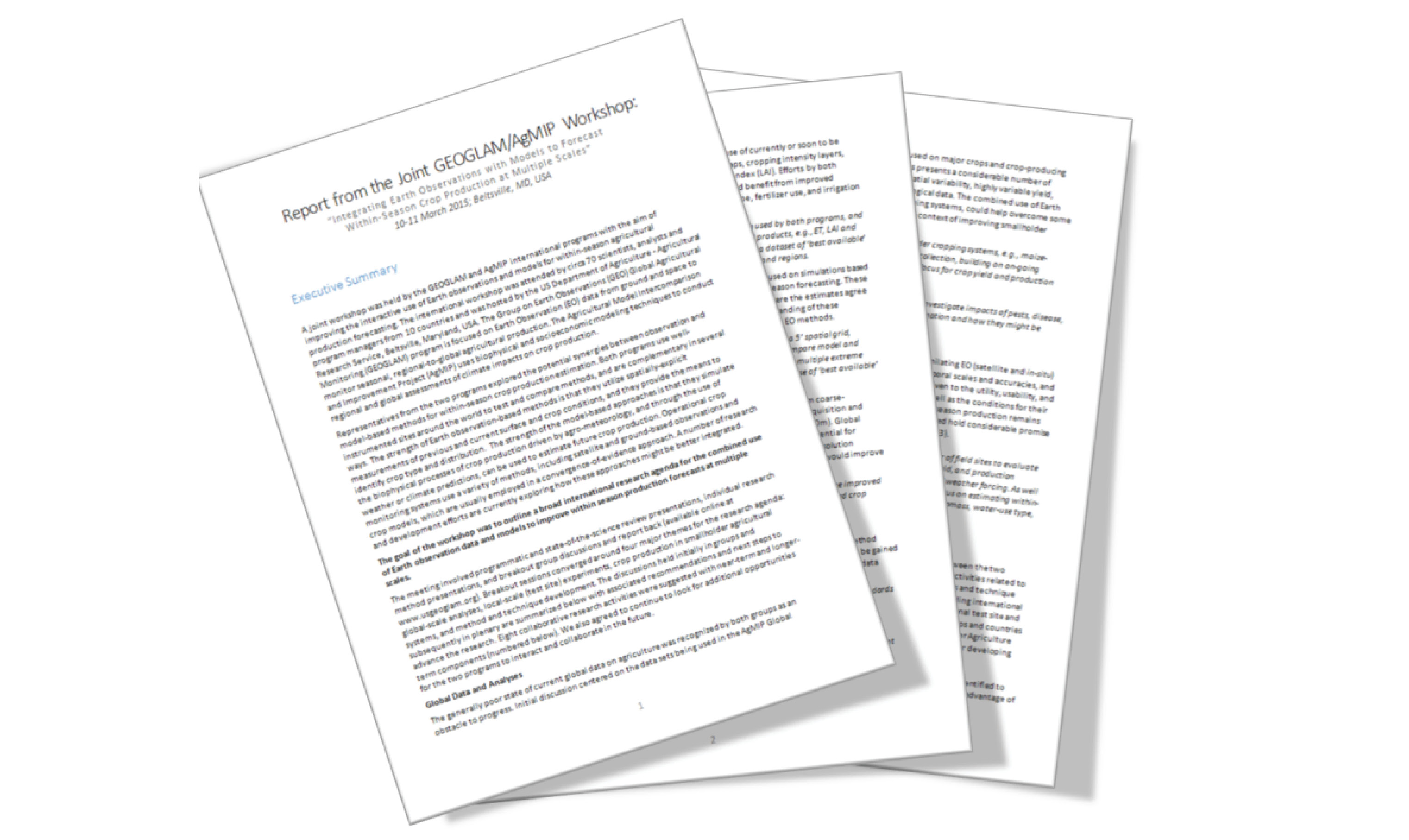Report from the Joint GEOGLAM/AgMIP Workshop
Aug 20, 2015
Executive Summary
By: Shari Lifson
A joint workshop was held by the GEOGLAM and AgMIP international programs with the aim of improving the interactive use of Earth observations and models for within-season agricultural production forecasting. The international workshop was attended by circa 70 scientists, analysts and program managers from 10 countries and was hosted by the US Department of Agriculture – Agricultural Research Service, Beltsville, Maryland, USA. The Group on Earth Observations (GEO) Global Agricultural Monitoring (GEOGLAM) program is focused on Earth Observation (EO) data from ground and space to monitor seasonal, regional-to-global agricultural production. The Agricultural Model Intercomparison and Improvement Project (AgMIP) uses biophysical and socioeconomic modeling techniques to conduct regional and global assessments of climate impacts on crop production.

Representatives from the two programs explored the potential synergies between observation and model-based methods for within-season crop production estimation. Both programs use well-instrumented sites around the world to test and compare methods, and are complementary in several ways. The strength of Earth observation-based methods is that they utilize spatially-explicit measurements of previous and current surface and crop conditions, and they provide the means to identify crop type and distribution. The strength of the model-based approaches is that they simulate the biophysical processes of crop production driven by agro-meteorology, and through the use of weather or climate predictions, can be used to estimate future crop production. Operational crop monitoring systems use a variety of methods, including satellite and ground-based observations and crop models, which are usually employed in a convergence-of-evidence approach. A number of research and development efforts are currently exploring how these approaches might be better integrated.
The goal of the workshop was to outline a broad international research agenda for the combined use of Earth observation data and models to improve within season production forecasts at multiple scales.
The meeting involved programmatic and state-of-the-science review presentations, individual research method presentations, and breakout group discussions and report back (available online at www.usgeoglam.org). Breakout sessions converged around four major themes for the research agenda: global-scale analyses, local-scale (test site) experiments, crop production in smallholder agricultural systems, and method and technique development. The discussions held initially in groups and subsequently in plenary are summarized below with associated recommendations and next steps to advance the research. Eight collaborative research activities were suggested with near-term and longer-term components (numbered below). We also agreed to continue to look for additional opportunities for the two programs to interact and collaborate in the future.
